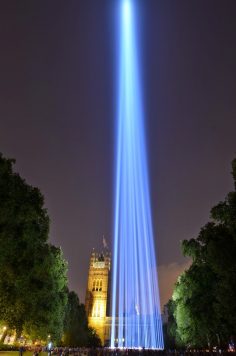RYOJI IKEDA
池田亮司
이케다 료지
Редзи Икеда
Spectra

source: ryojiikeda
1 a band of colors, as seen in a rainbow, produced by separation of the components of light by their differentdegrees of refraction according to wavelength.
• ( the spectrum) the entire range of wavelengths of electromagnetic radiation.
• an image or distribution of components of any electromagnetic radiation arranged in a progressive series according to wavelength.
• a similar image or distribution of components of sound, particles, etc., arranged according to such characteristics as frequency, charge, and energy.
2 used to classify something, or suggest that it can be classified, in terms of its position on a scale between two extreme or opposite points : the left or the right of the political spectrum.
• a wide range : self-help books are covering a broader and broader spectrum.
ORIGIN early 17th cent. (in the sense [specter] ): from Latin, literally ‘image, apparition,’ from specere ‘to look.’
spectra is a series of large scale installations employing intense white light as a sculptural material. The installations are designed in response to specific gallery spaces or public sites selected by the artist. White light is one of the purest forms of transformation from electricity. We see a pure state of energy. Through these installations we witness how the pure transformation transforms the environment itself and ourselves.
White light includes the full colour spectrum. With the light-installation, the perceiver receives colour information into his/her eyes instantly and so intensely that he / she cannot see anything, just like in darkness. The installation therefore becomes almost invisible. Consequently, the art works provoke a feeling of something indescribable, something sublime and unearthly, something unforgettable.
.
.
.
.
.
.
.
source: ryojiikeda
The Paris night sky is illuminated with blinding white light beamed vertically from scores of highly powered architectural lamps; spectra [paris] is a major new work by international artist Ryoji Ikeda, commissioned for Nuit Blanche, the city’s annual white night contemporary arts festival. The lighting is accompanied by a sound composition. As visitors move through the field of light they each experience a unique symphony of ultra pure sine sound waves. Situated on a plaza next to the tallest skyscraper in France, Ikeda’s startling twelve-hour transformation of Paris is one of the key events for Nuit Blanche.
.
.
.
.
.
.
.
source: tbfm2013
池田亮司1966年出生于日本岐阜,现工作、生活于法国巴黎。
作为日本顶尖的电子音乐创作者与视觉艺术家,池田致力于研究声音本身的根本特质,及其作为光的可见所同时具备的数学的精确与数学的美感。池田是国际上少数几位被公认为横跨视听两个领域且作出杰出创造的艺术家。他能将声音、视觉、物质材料、物理现象及数学观念淋漓尽致地编排为沉浸式的现场演出与装置。
在纯粹的音乐活动之余,池田还在进行着一系列的长期项目:如自2006年持续至今的“datamatics”系列,由影像、雕塑、声音、新媒体等多元形式组合而成,从而探索人的潜能,并感知渗透于我们日常生活的数据之不可见的多重实在。自2008年持续至今的“test pattern”项目则开发了一个系统,可以将任意种类的数据:文本、声音、照片、影片等,都转换为条码模式与二进制模式排列的0和1字符串,由此检视设备性能的关键点同人类感知阈限之间的关系。自2001年持续至今的“spectra”系列是一组大型装置,将强烈的白光用作雕塑材料,并以此转换位于阿姆斯特丹、巴黎、巴塞罗那及名古屋的公共区域,各地所实现的版本各有不同。自2000年至今,池田还与卡斯滕·尼古拉合作了项目“cyclo”,通过检视软件与计算机合成音乐的出错结构与重复循环,结合实时声音视觉化的视听模块,以现场演出、CD与出版物(Raster-noton出版社,2001年,2011年)的形式呈现其创作。
他在全球各地演出、展出其作品,包括澳大利亚影像中心、波士顿MIT、巴黎蓬皮杜艺术中心、巴塞罗那Sónar艺术节、伦敦泰特现代美术馆都柏林爱尔兰现代艺术馆、罗马音乐礼堂、东京ICC、艺术北京博览会、哥德堡双年展、蒙特利尔电子艺术节、图尔昆Le Fresnoy、山口艺术媒体中心、巴黎实验室、东京当代美术馆、伯明翰Ikon画廊、新加坡美术馆、纽约跨界艺术节、林茨电子艺术中心、巴塞罗那Grec艺术节、名古屋爱知三年展、威尼斯大皇宫、纽约军械库公园大道、伦敦巴比肯中心、波哥大美术馆、柏林汉堡火车头博物馆、希洪Laboral、巴黎秋季艺术节,以及众多电子音乐节和小型DJ俱乐部。

